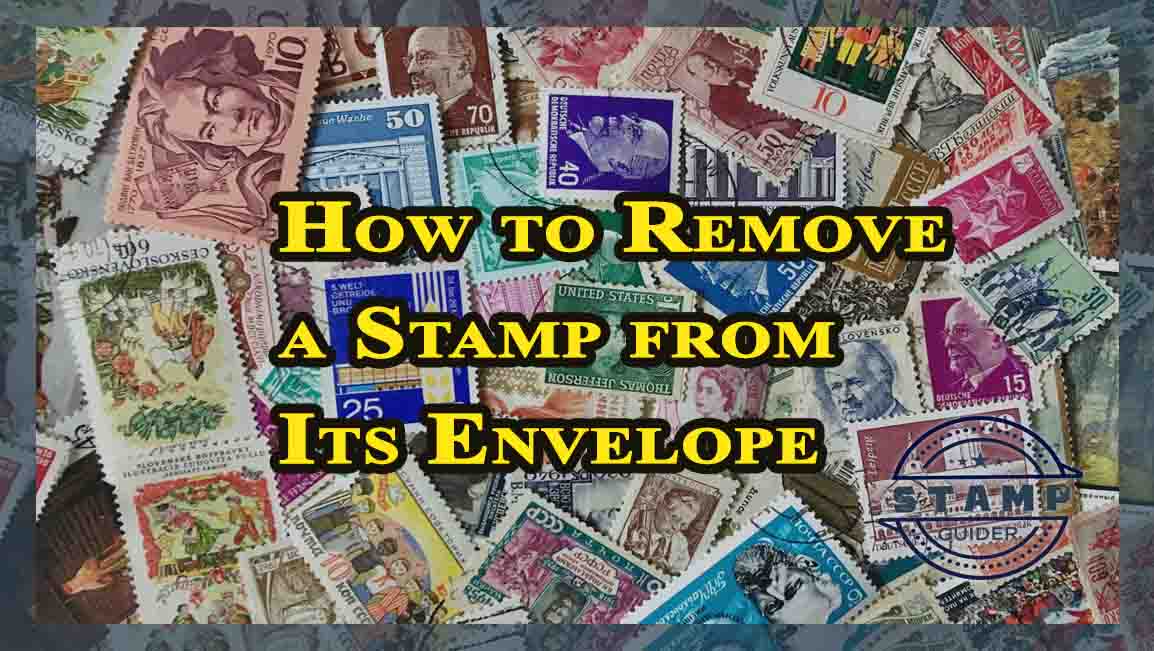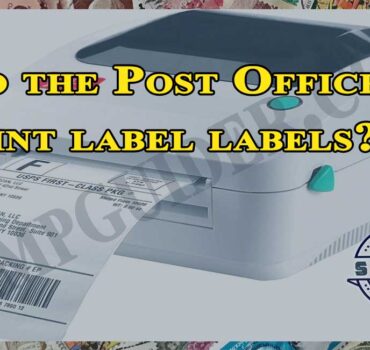The following method can be used to remove most stamps, which require moisture to stick to paper, trimming off excess paper, dipping the stamp in water, and then carefully peeling it off.
Self-adhesive stamps can be a lot tougher to remove, as they don’t need moisture to work – and removing one is more like peeling off a sticker.
Table of Contents
How To Remove A Traditional Stamp
An envelope must be opened by gently removing the used postage stamps. A bowl of warm water and scissors must be used. Paper towels layered on a cookie sheet should be used to dry the stamps.

Following these steps will aid in removing a traditional (moisture based) stamp:
1. Remove Excess Paper
You should leave a border of roughly 10mm around the stamp. The border will enable you to gauge when the paper is sufficiently damp.
2. Soak The Paper
It is best to soak the stamp by filling a bowl with cold water (only a few millimeters is required) and float the paper with the stamp on top of the water.
In this way, you can prevent damage to the stamp by keeping it relatively dry, while the paper backing usually gets wet.
It depends on the thickness of the paper how long it takes to soak your paper sufficiently, it may take a couple of minutes or an hour.
In the case of thick paper or card, peeling away paper layers can speed up the process. Use a scalpel or sharp knife to control the paper layers.
Occasionally, you may need to fully submerge paper or cardboard that is extremely strong, if floating does not soften the paper or card sufficiently.
3. Peel The Stamp Off The Paper
Then, to get the stamp off of the water, lift it gently with a tweezer once it is completely damp.
The stamp should stick just enough so that you can peel the paper off with the face down stamp on a solid surface.
It may cause the stamp to tear if you peel it straight off the paper if it is wet.
The paper may not come off very easily, so continue soaking for another few minutes.
4. Dry The Stamp
Just allow your stamps to dry out to complete your project.
You can place stamps on some blotting paper or paper towels or kitchen roll so that the stamps can absorb the water.
If you dry the stamps improperly, you could damage them in a number of ways.
- Dry the stamps at room temperature rather than on a radiator, which will make them curl.
- Please make sure that any kitchen roll you use or any blotting papers you use are white and have no colour of their own, or else the colour may seep into your stamp and ruin its design.
Let your stamps dry in the sun for two hours at least.
How To Remove A Self-adhesive / No-lick Stamp
Originally used in Sierra Leone to beat the problem of traditional stamps sticking together due to a humid climate…Self-adhesive stamps have now spread throughout the world. Consequently, many companies suffered from financial loss as a result of this waste.
The use of self-adhesive stamps has increased in popularity across the globe including in the United States and the United Kingdom.
Unlike water-based glues, self-adhesive stamps use an oil-based glue that does not break down when exposed to water.
It is advisable to break down the oil with something stronger than water to remove a no-lick stamp, which is why something like acetone is ideal.
Wear gloves when acetone is being handled.
Once the nail polish remover is in your hand, simply drip a few drops onto the sheet of paper to liquify it sufficiently and keep the stamp intact. Put the stamp in the warm water for ten minutes or so so that the adhesive softens enough to peel off easily. This should happen after some time in the water.
If you do not have any nail polish remover to hand, you may use the following method instead (please note that you should use this method with new stamps only as the hot water may damage them and make the colors run):
- Put hot water in a bowl.
- Add some lemon-scented dishwashing soap.
- Float the stamps for 15 minutes on the surface of the water.
Peel them off! - To prevent curling, dry them out (do not leave them in the sun for long).
Things To Avoid
The reason why stamps are so fragile is that they are easily damaged, especially when wet. Below are a few things you can do to help keep your stamps in great condition:
- The steam method is commonly thought to be the best method for removing stamps. However, it is also costly and dangerous (scalding) in that it can easily lead to the stamp becoming misshapen.
- Be aware that soaking coloured paper can cause your stamp to discolour. Do not soak the coloured paper unless you have already removed as much of it as possible (using a scalpel if needed).


